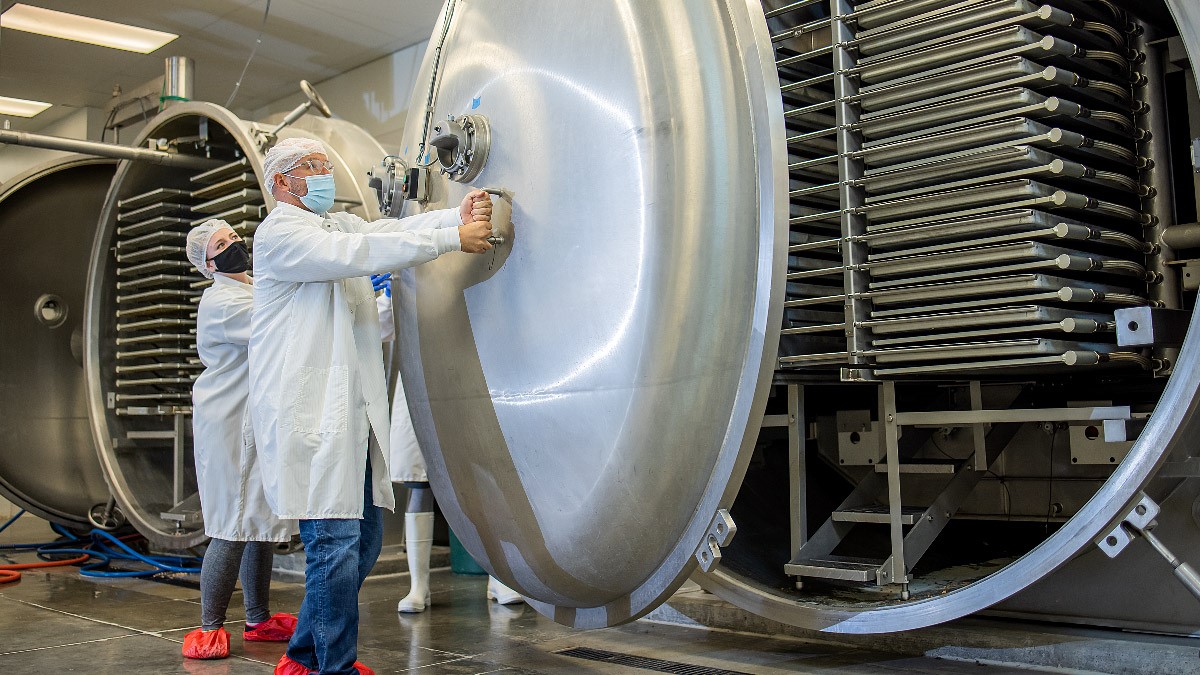Freeze drying, also known as lyophilization, is a process of removing water from food, pharmaceuticals, and biological materials, while preserving their structural integrity and functionality. Freeze drying involves freezing the material, reducing the pressure, and adding heat, which allows the water to sublimate directly from the solid phase to the vapor phase, bypassing the liquid phase. The result is a dried product that can be stored for a long time without degradation or spoilage. Freeze dryers are the machines that perform this process. In this article, we will explore the technology behind freeze drying, its applications, and the factors that affect the quality of the dried product.
What is Freeze Drying?
Freeze drying is a dehydration process that involves freezing a substance, reducing the pressure to create a vacuum, and applying heat to the substance. During the process, the water molecules in the substance sublimate, or turn from solid to vapor, without passing through the liquid phase. The result is a dried product that retains its structure, nutrients, and other functional properties. Freeze drying is often used for sensitive materials that cannot be dried using conventional methods, such as air or oven drying, which can damage the material.
How Does Freeze Drying Work?
Freeze drying involves several steps, including freezing, primary drying, and secondary drying. The first step is freezing the material, which is usually done using a blast freezer or liquid nitrogen. Freezing helps to solidify the water molecules and stabilize the structure of the material.
After the material is frozen, the pressure in the freeze dryer is reduced, typically to around 10 Pa, to create a vacuum. This allows the sublimation process to occur, where the ice crystals in the material turn directly into water vapor.
The final step is the secondary drying, which involves raising the temperature slightly to remove any remaining water molecules that may be trapped in the material. The temperature used is below the freezing point of water, typically between -20°C to -50°C, to prevent the material from melting or losing its structure.
Applications of Freeze Drying
Freeze drying has a wide range of applications, including food preservation, pharmaceuticals, and biological materials.
Food Preservation
Freeze drying is commonly used in the food industry to preserve food for long periods without losing its taste, texture, or nutritional value. Freeze-dried foods include fruits, vegetables, meats, and coffee. Freeze-drying is also used to produce instant coffee and tea, as well as to preserve foods for backpacking, camping, and emergency situations.
Pharmaceuticals
Freeze-drying is a common method used in the pharmaceutical industry to produce stable, long-lasting medications. Many drugs, such as vaccines, insulin, and antibiotics, are freeze-dried to enhance their shelf life, reduce the need for refrigeration, and make them more convenient to store and transport.
Biological Materials
Freeze-drying is used in the preservation of biological materials such as cells, tissues, and blood products. Freeze-drying helps to maintain the structural integrity of these materials and extend their shelf life. This technology is used in the medical and research fields for tissue engineering, regenerative medicine, and storage of biological samples.
Factors Affecting Freeze-Drying Quality
Several factors can affect the quality of the freeze-dried product, including the freezing rate, the primary drying temperature, the secondary drying time, and the pressure in the freeze dryer.
Freezing Rate
The rate of freezing can impact the structure of the material and the size of the ice crystals. Slow freezing can result in large ice crystals that can damage the structure of the material. Rapid freezing, on the other hand, can result in small applied with caution, as excessive heat can damage the material or cause it to melt.
Conclusion
Freeze-drying is a powerful technology that has revolutionized the way we preserve and store sensitive materials. From food to pharmaceuticals and biological materials, freeze-drying has a wide range of applications that require precise control of temperature, pressure, and other factors. With proper equipment and expertise, freeze-drying can produce high-quality products that retain their structural integrity and functional properties. As the demand for long-term storage of sensitive materials increases, freeze-drying is poised to play an even more significant role in the future.
FAQs
- What is the difference between freeze-drying and other drying methods?
Freeze-drying differs from other drying methods in that it preserves the structure, nutrients, and other functional properties of the material being dried. It does this by using a combination of freezing, vacuum, and low heat to remove water molecules from the material.
- What types of materials can be freeze-dried?
Many different types of materials can be freeze-dried, including food, pharmaceuticals, and biological materials. However, not all materials are suitable for freeze-drying, as the process can be expensive and time-consuming.
- How long does the freeze-drying process take?
The freeze-drying process can take several hours to several days, depending on the type of material being dried and the size of the freeze dryer.
- Can freeze-dried food be rehydrated?
Yes, freeze-dried food can be rehydrated by adding water. This restores the food’s original texture, taste, and nutritional value.
- Is freeze-drying safe?
Yes, freeze-drying is a safe and reliable method of preserving sensitive materials. However, it should only be performed by trained professionals using appropriate equipment and safety protocols.
For more blog click here
Read more about benefits of health
read also Desert Safari Abu Dhabi
